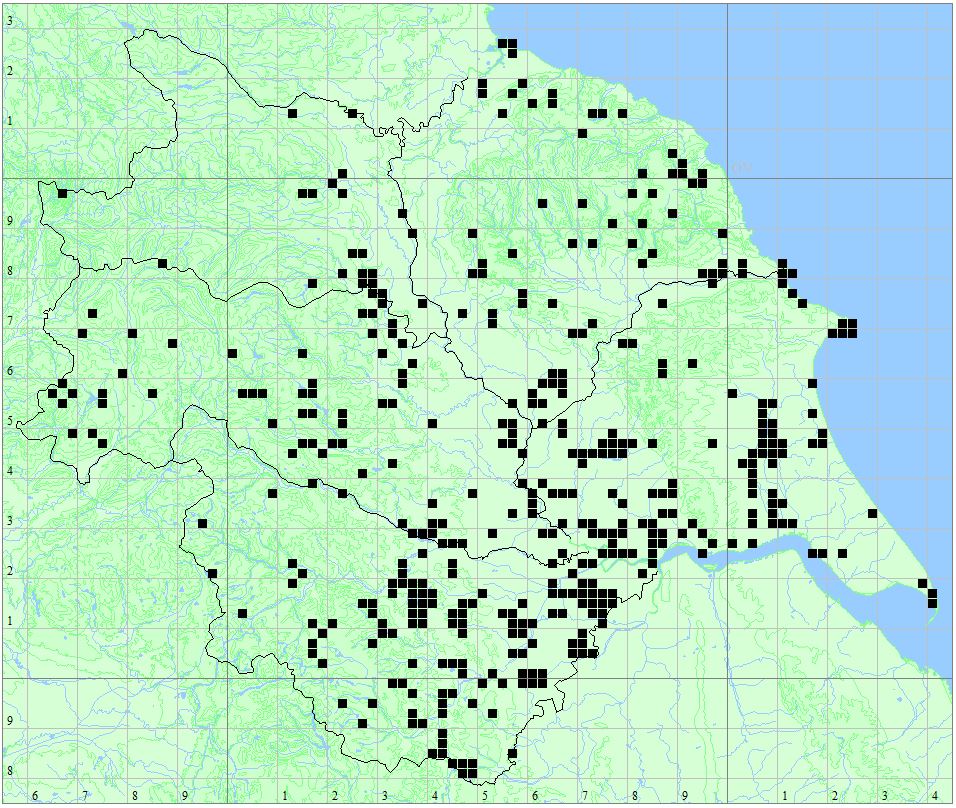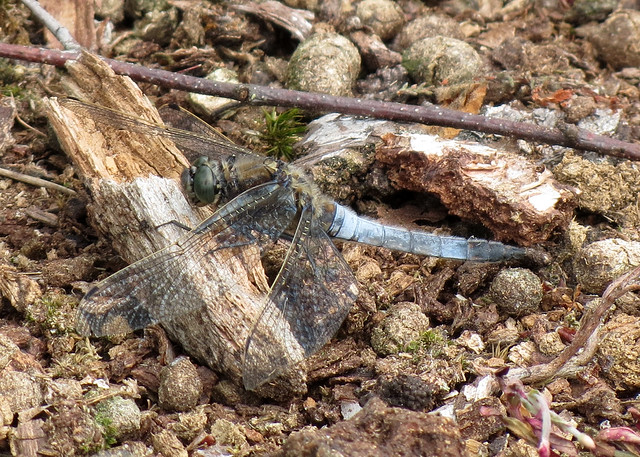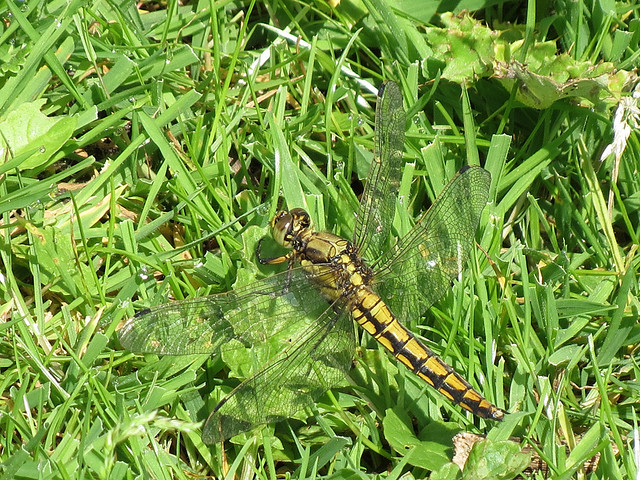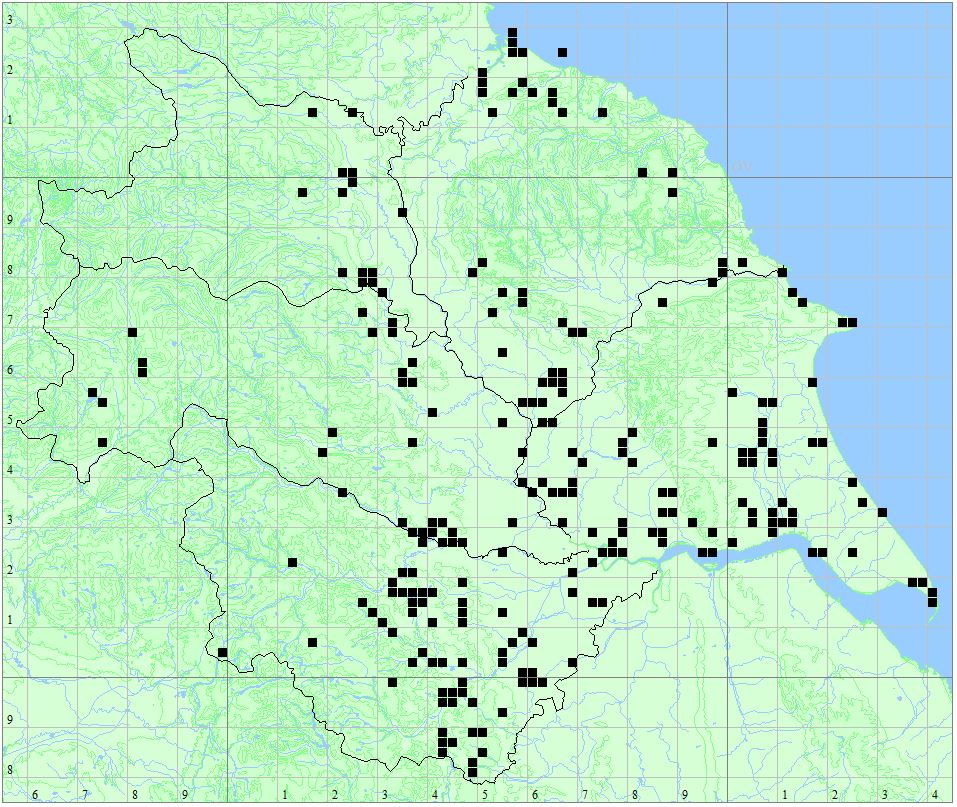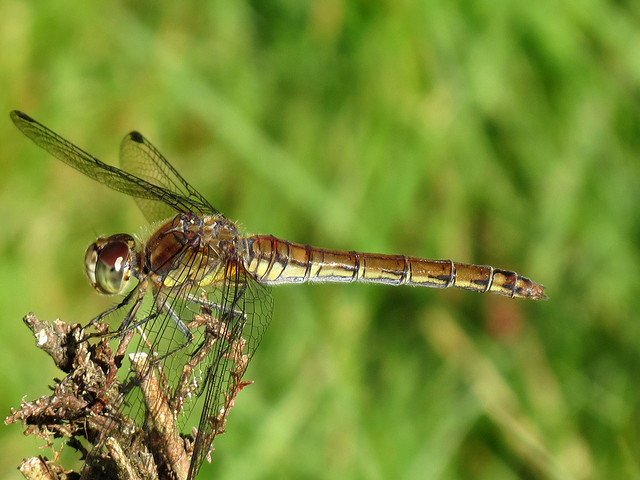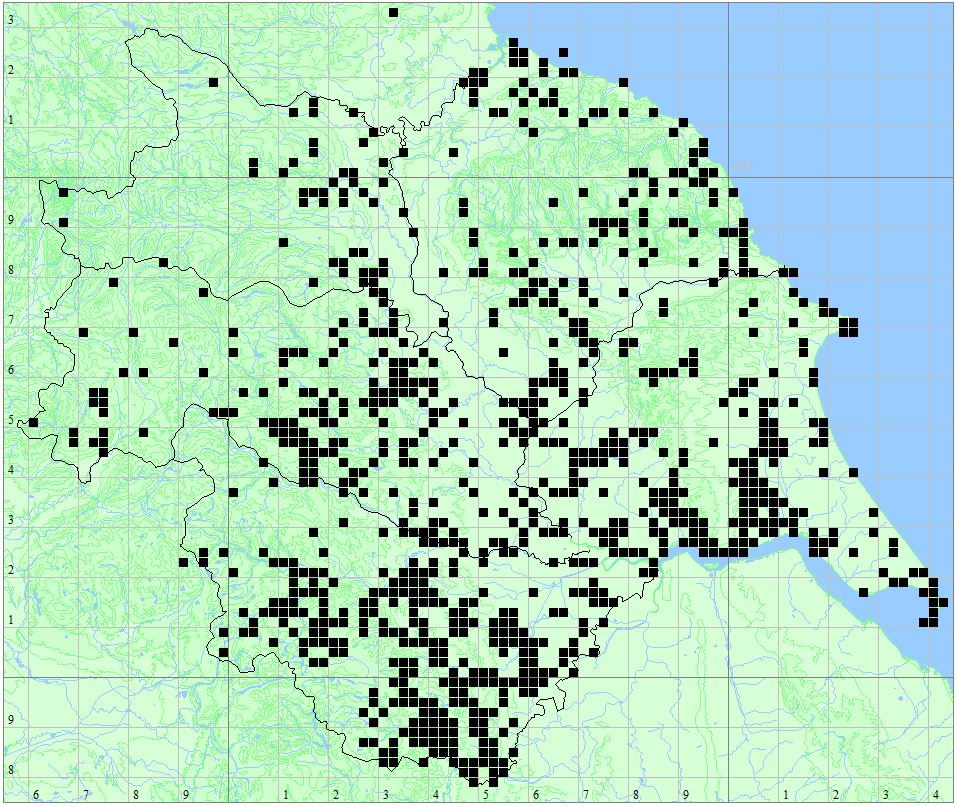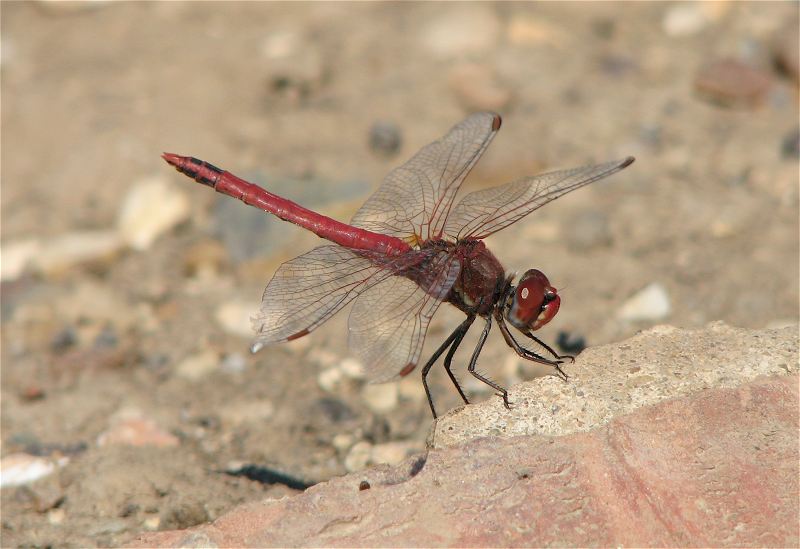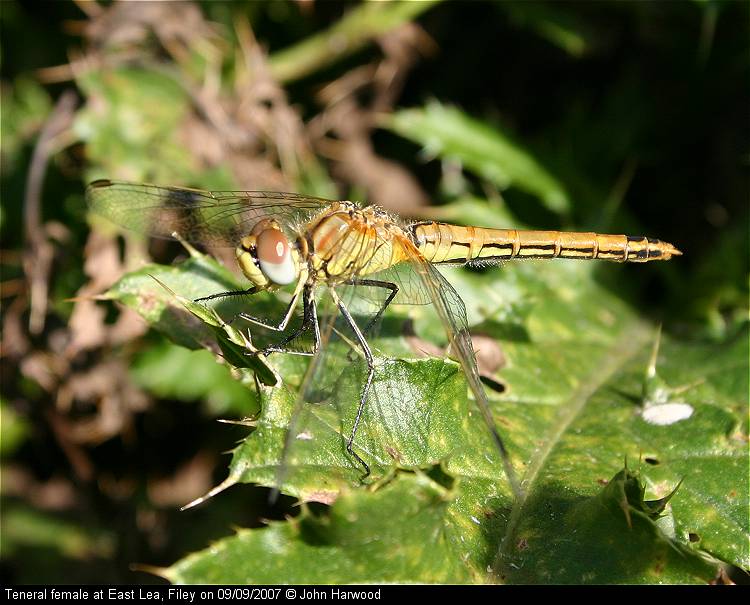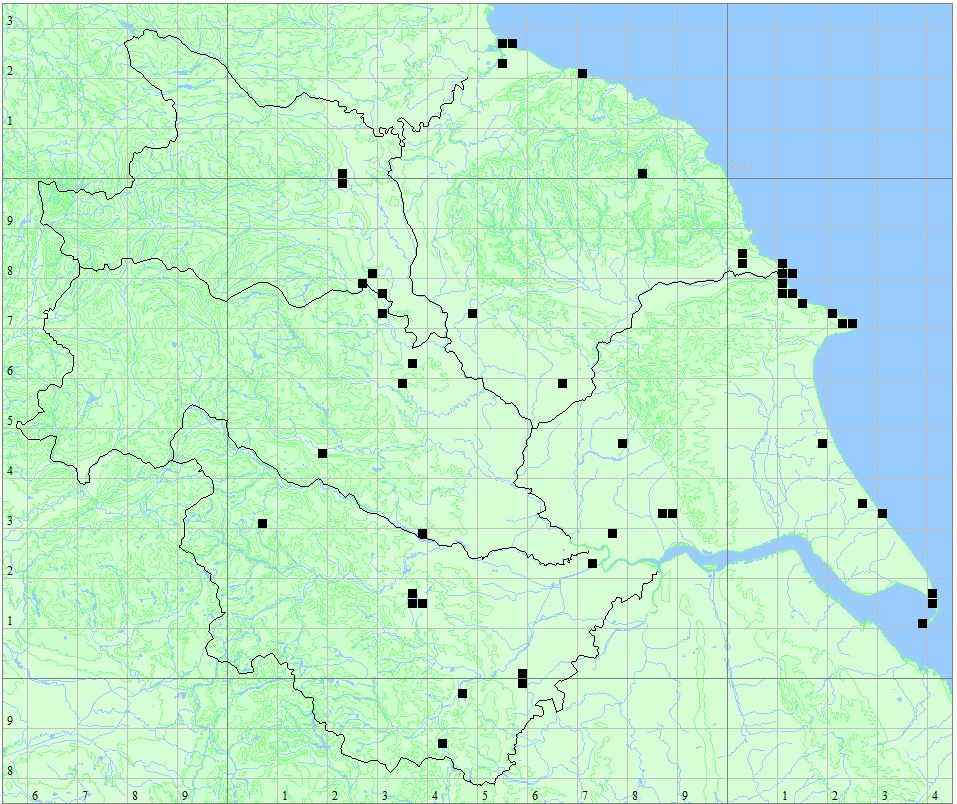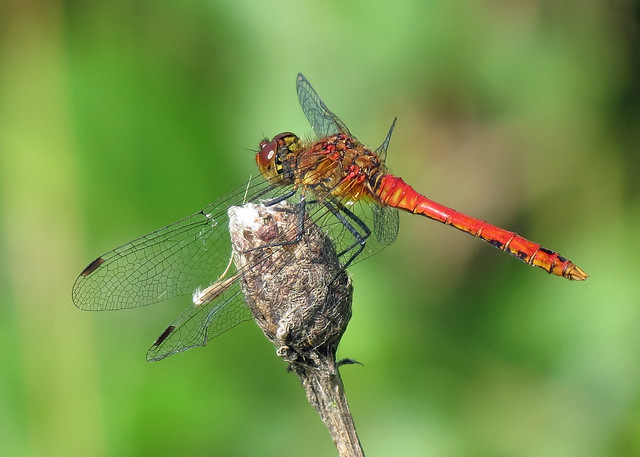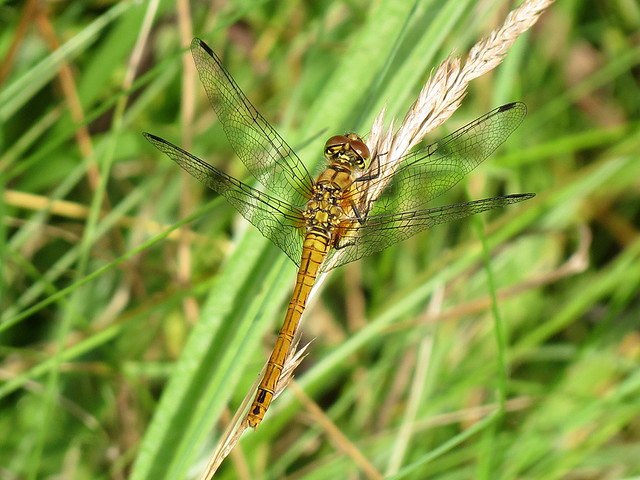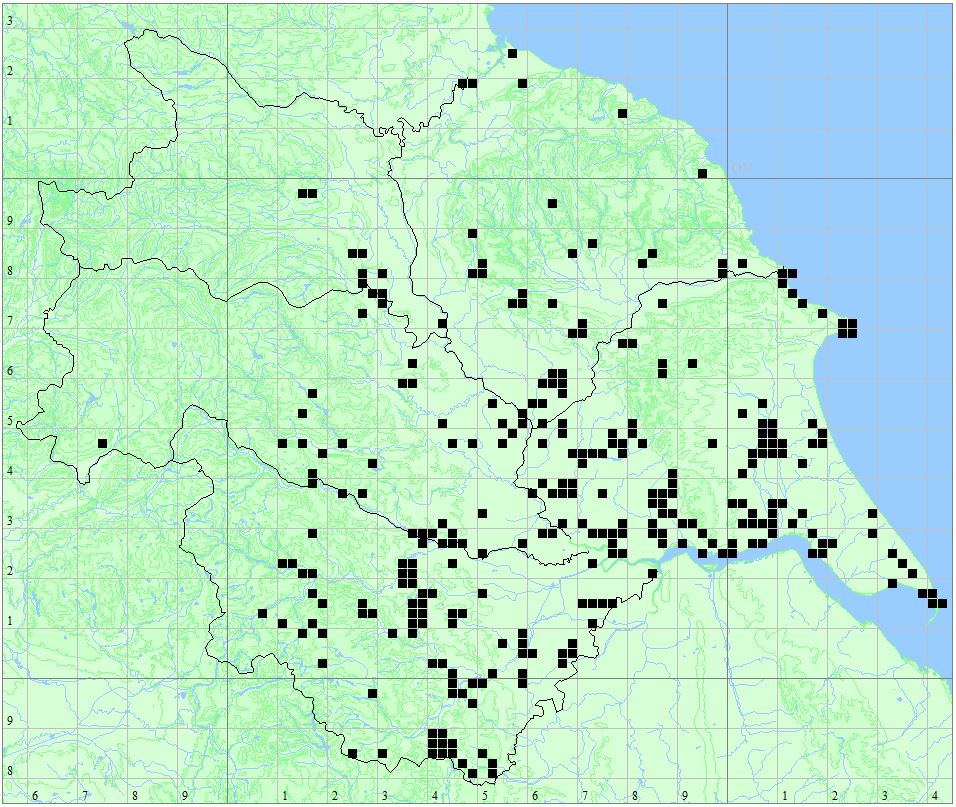<-Previous Species – Next Species->
Length
43mm, Wings 76mm
Males

Thorax brown, no antehumeral stripes; abdomen brown, last 4 segments darker than the rest, yellow spots on sides; wings dark patches at nodes on leading edges and at bases of rear wings.
Females

Similar to males, main difference is the shape of the anal appendages.
Habitat
Prefers sites of still water consisting of lakes, ponds, bog pools, canals and dykes. Will tolerate brackish conditions. The largest concentrations are associated with acidic ponds and pools.
Behavior
Males are territorial, their noisy clashes are obvious where densities are high. Readily returns to the same perch on emergent vegetation, after sparring with other males, or after short patrols along the waters edge. Copulation is short taking place in flight, only lasting for 5-20 seconds. Female oviposits by flicking the abdomen tip downwards into the water. The eggs then sink and adhere to submerged vegetation. Males may stay close by to guard females during oviposition. Larvae live among the bottom debris, then emerge after two to four years. Emergence takes place amongst marginal vegetation during daylight hours.
Flight Period
Distribution Map
Locations
- Rodley Nature Reserve
- Moorgates Quarry LNR
- Thorne Moors – Humberhead Peatlands NNR
- Thorpe Marsh
- Oakhill & Goole Brick Ponds
- Paull Holme Strays
- Treeton Dyke
- Rabbit Ings
- Forge Valley NNR
- Walton Colliery Nature Park
- Pugneys Country Park
- The Yorkshire Arboretum
- Nosterfield Local Nature Reserve
- Timble Ings
- Fairburn Ings
- Potteric Carr
- Fen Bog
- Spurn Point
- Skipwith Common
- Saltmarshe Delph
- Pulfin and High Eske Nature Reserve
- Pocklington Canal
- Oak Road Lake, Hull
- North Cave Wetlands
- Leven Canal
- Filey Dams
- Eastrington Ponds
- Broomfleet Washlands
- Noddle Hill Nature Reserve
- Allerthorpe Common
- Tophill Low Nature Reserve
